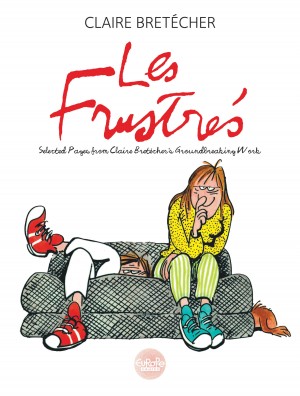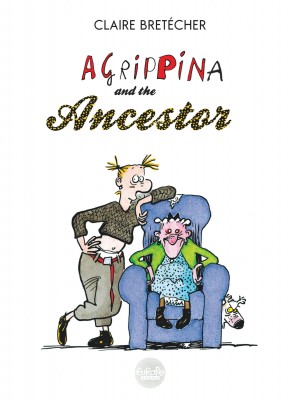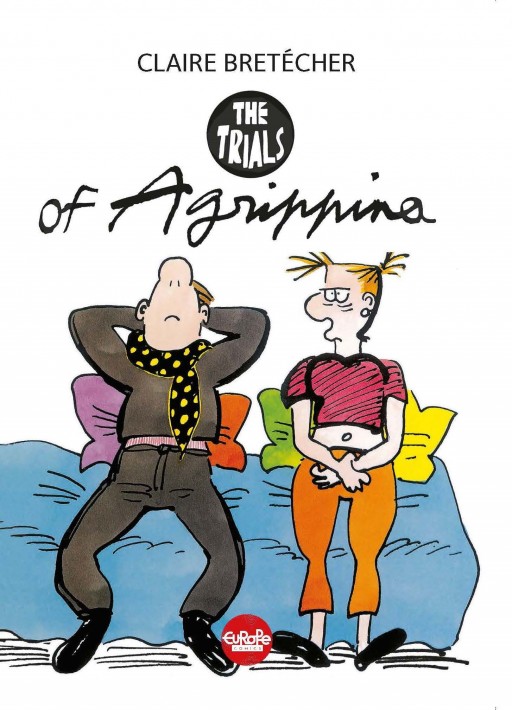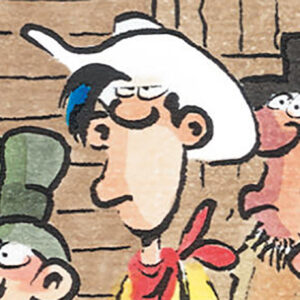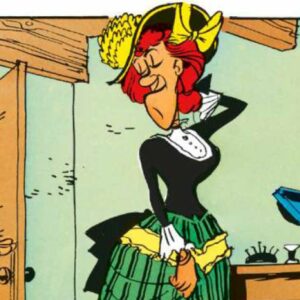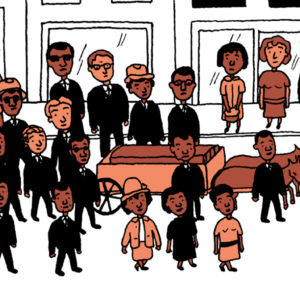Born in Nantes and overcome by boredom at a young age, Claire Bretécher quickly entered the world of comics in order to keep herself occupied. In the early 1960s, after dropping out of Fine Arts studies because cartoonists there are persona non grata, she taught drawing for nine months, and then produced illustrations for various newspapers of the Bayard group. In 1963, she met Goscinny who asked her to illustrate "Facteur Rhésus", his deeply moving saga about a postman, in "L'os à moelle". 'I was flattered by the proposal, but then I was not in a position to refuse ... He made me draw stuff I didn't know how to draw: a building renovation, for example, which I know nothing about. I can't draw a building renovation! What's worse, he wasn't particularly happy with the result, which he didn't exactly tell me politely, as always. Later, he asked me for illustrations for Pilote'. In the mean time, Bretécher collaborated with Tintin magazine in 1965 and 1966, and in 1968 created the "Baratine and Molgaga" series in the monthly Record (Bayard Presse). From 1967 to 1971, she was with Spirou. First for a few short stories, which then gave way to "Gnangnan" and "Naufragés" (text by Raoul Cauvin), as well as the short-lived "Robin des foies" (text by Yvan Delporte). In 1977, Bretécher made a brief appearance in the magazine - more specifically in its supplement "Le Trombone Illustré" - in which she recounted the misfortunes of Fernand the orphan (text by Yvan Delporte). In 1969, for Pilote, she began working on "The Adventures of Cellulite" (a more or less medieval princess, feminist before her time), and later "Salads de Saison". She also illustrated several comic strips on current affairs. In 1972, she participated in the creation of "L'Écho des savanes" with her friends Mandryka and Gotlib. Her stories became increasingly hard-hitting, until finally she came up with the unforgettable album, "Frustrés". In 1973 she was approached by the magazine "Le Sauvage", for which she drew "Le Bolot occidental" and 'Le Nouvel Observateur'. She was soon producing a weekly strip entitled "'La Page des Frustrés". It was also at that time that she decided to embark on self-publishing - an exciting but exhausting adventure. The first album of "Les Frustrés" was released in 1975. In 1988, after "La Vie passionnée de Thérèse d'Avila" (1980, reissued in 2007 by Dargaud), she worked on the first album of the adventures of Agrippine, a superb prototype of a teenager. Seven more albums followed. All of this led to a series of 26 cartoons, twenty-six minutes each, produced by Ellipse Animation and broadcast by Canal + since November 2001. The eighth album of Agrippine, entitled "Agrippine Déconfite" (Dargaud) was released in 2009. Besides comics, Claire Bretécher practices (with great skill) the art of painting, demonstrated by her sensitive portraits of her relatives (and self-portraits), taken from her diaries, that are included in albums "Portraits" (DENOËL 1983), "Moments de lassitude" (Hyphen, 1999) and "Portraits sentimentaux" (La Martiniere, 2004). Through her stories, Claire Bretécher is manifestly the biggest "comedian-sociologist" of the ninth art. Deceptively simplistic, her lively but precise drawing style fully supports her clear and uncompromising principles, all the while remaining full of tenderness for some women and almost all children...
Country of origin: France Europe Comics Publisher: Dargaud (France)

